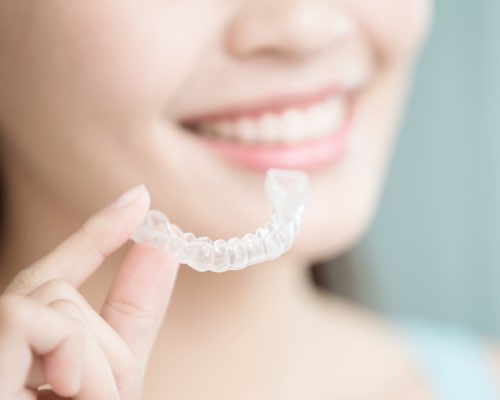Services

Children Orthodontics
Why Important: The American Association of Orthodontist recommends children to have an orthodontic screening by age 7, in order to promote optimum facial growth and balance. Most orthodontic treatment begins between the ages of 9 and 14, however by age 7, most children have a mix of adult and baby teeth. Orthodontists can spot subtle problems with jaw growth and emerging teeth while some baby teeth are still present. That’s important because some orthodontic problems are easier to correct if they’re found early.
Best Timing: The best time for your child to see an orthodontist is between the ages of 6-10 when their baby teeth are starting to fall out and permanent teeth are beginning to erupt. While your child’s teeth may appear to be straight, there could be a problem that only an orthodontist can detect. Of course, the check-up may reveal that your child’s bite is fine, and that can be comforting news.
Adult Orthodontics
Problem: Crooked teeth and a bad bite can contribute to gum and bone loss, as well as abnormal wear of the teeth; when left untreated, many orthodontic problems may become worse. When you have a malocclusion (another way of saying “bad bite”), your teeth may be crowded, spaced, or may not fit together properly. Crowded teeth
Why Do It: It’s Time To Smile Your Best. Orthodontic treatment can be successful at any age, and adults especially appreciate the benefits of a beautiful smile. Orthodontics can improve the positions of your teeth for periodontal health, as well as prepare for the placement of crowns, bridges or implants. You’ll be pleased to learn that braces will work with your current lifestyle. Today’s technology makes people wearing braces feel better about how they look. Metal brackets are much smaller than they used to be. Braces made of ceramic or plastics are even less noticeable. We can help you to choose which of these options is best for you.


Adult Orthodontics
Problem: Crooked teeth and a bad bite can contribute to gum and bone loss, as well as abnormal wear of the teeth; when left untreated, many orthodontic problems may become worse. When you have a malocclusion (another way of saying “bad bite”), your teeth may be crowded, spaced, or may not fit together properly. Crowded teeth makes it harder to clean and maintain. Given time, crowding may contribute to tooth decay, gum disease and even tooth loss. Bad bites also can result in abnormal wearing of tooth surfaces, difficulty in chewing and damage to supporting bone and gum tissue. Poor tooth alignment can contribute to pain in your jaw joints.
Why Do It: It’s Time To Smile Your Best. Orthodontic treatment can be successful at any age, and adults especially appreciate the benefits of a beautiful smile. Orthodontics can improve the positions of your teeth for periodontal health, as well as prepare for the placement of crowns, bridges or implants. You’ll be pleased to learn that braces will work with your current lifestyle. Today’s technology makes people wearing braces feel better about how they look. Metal brackets are much smaller than they used to be. Braces made of ceramic or plastics are even less noticeable. We can help you to choose which of these options is best for you.

Invisalign
What is it?: Invisalign uses a series of invisible, removable, and comfortable aligners that no one can tell you’re wearing. So, you can smile more during treatment as well as after. Invisalign is made with 3-D computer imaging technology and has been proven effective. More than 70% of orthodontists in the US and Canada are certified to treat with Invisalign.
Why would I want it?: Not only are the aligners invisible,
How does it work?: You wear each set of aligners for about 2 weeks, removing them only to eat, drink, brush, and floss. As you replace each aligner with the next in the series, your teeth will move — little by little, week by week — until they have straightened to the final position Dr. Tai has prescribed. You’ll visit Dr. Tai about once every 6 weeks to ensure that your treatment is progressing as planned. Total treatment time averages 9-15 months and the average number of aligners worn during treatment is between 18 and 30, but both will vary from case to case.
